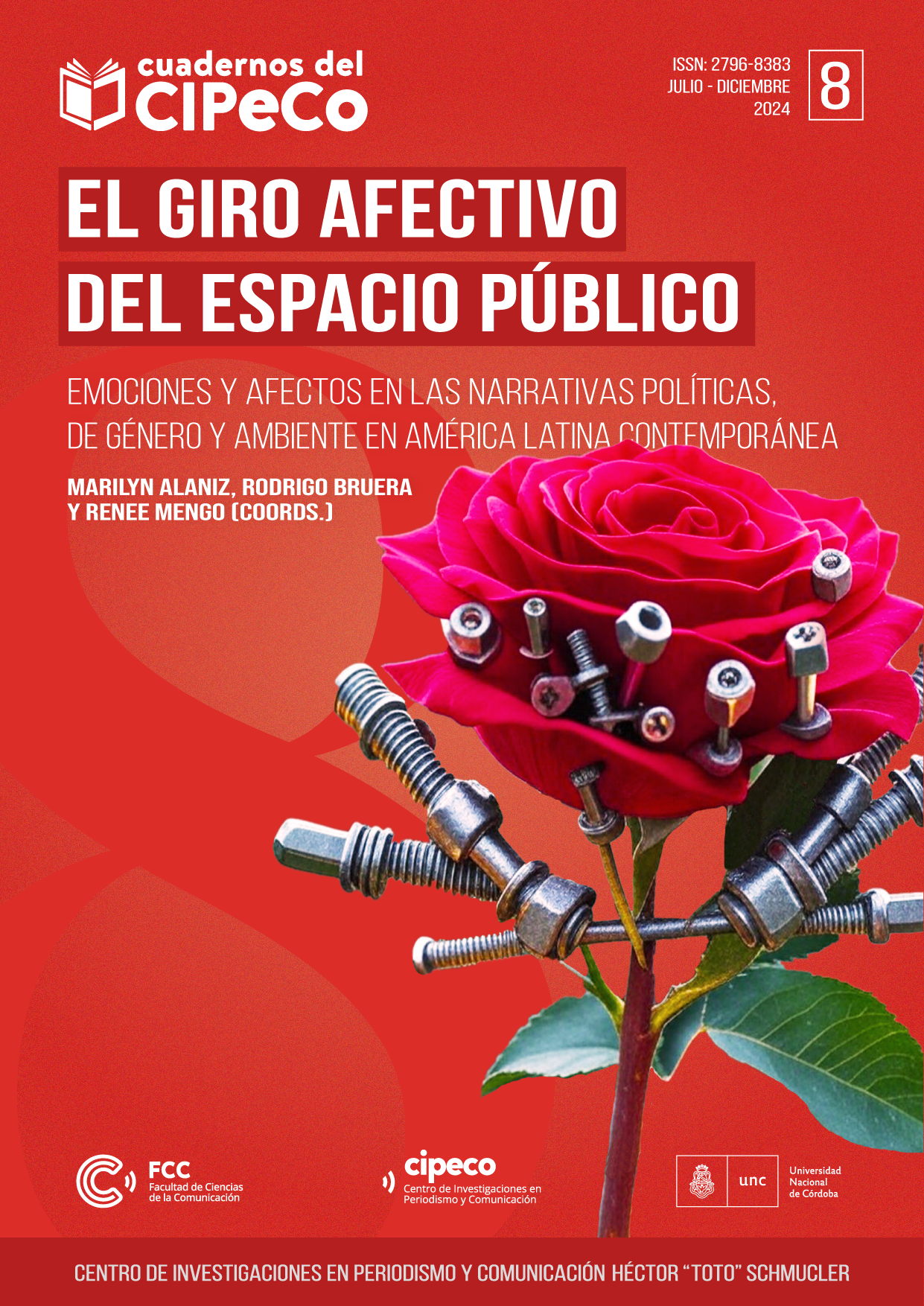Distintas formas de mirar el agua: distintas formas de sentir
Keywords:
Anthropocene , affective ecocriticism , emotions, solastalgia , waterAbstract
The emphasis on affections arises in response to the transformations and challenges imposed by the current sociocultural context. One, or perhaps the greatest of these challenges, refers us to the concept of the Anthropocene, a geological era in which the human species has become a geological force. From environmental studies, affective ecocriticism emerges as a new approach that recovers the dimension of emotions in public life and the ways in which we approach our environment. This work aims at exploring in Distintas formas de mirar el agua (2015) by Julio Llamazares, the emotions generated by the construction of a dam and the flooding of the habitat of the region’s inhabitants, particularly focusing on the emotions of Domingo’s family, who had to leave their home to start anew elsewhere. The text will be approached from the perspective of affective ecocriticism.
References
Albrecht, G., Sartore, G. M., Connor, L., Higginbothan, N. (2007). Solastalgia: The Distress Caused by Environmental Change. Australasian Psychiatry, 15(1): S95-S98. En línea en: https://doi.org/10.1080/10398560701701288
Albrecht, G. (2019). Earth Emotions. New Words for a New World. Londres: Cornell University Press.
Altman, I. y Low, S. M. (Eds.). (1992). Place Attachment. Nueva York: Plenum.
Arnold, J. (2018). Feelings the Fires of Climate Change. Land Affect in Canada’s Tar Sands. En: Affective Ecocriticism: Emotion, Embodiment, Environment (pp. 95-116). Londres: University of Nebraska Press.
Bennett, J. (2010). Vibrant Matter. A Political Ecology of Things. Durham: Duke University Press Books.
Bladow, K. y Ladino, J. (Eds.). (2018). Affective Ecocriticism: Emotion, Embodiment, Environment. Londres: University of Nebraska Press.
Campbell, N. A. (2018). New Gentleness. Affective Ficto Regionality. En: Affective Ecocriticism: Emotion, Embodiment, Environment (pp. 71-94). Londres: University of Nebraska Press.
Clough, P. T. y Halley, J. (Eds.) (2007). The Affective Turn. Theorizing the Social. Durham: Duke University Press.
Crutzen, P. J. y Stoermer, E. F. (2000). The “Antropocene”. Global Change. Newsletter, 41, 17-18. En línea en: http://www.igbp.net/download/18.316f18321323470177580001401/1376383088452/NL41.pdf
Gilligan, C. (1993). In a Different Voice. Cambridge: Harvard University Press.
Jasper, J. M. (2018). The Emotions of Protest. Chicago: University Chicago Press.
Llamazares, J. (2015). Distintas formas de mirar el agua. E-pub. Madrid: Alfaguara.
Low, S. M. (1992). Symbolic Ties that Bind. Place Attachment in the Plaza. En I. Altman y S. M. Low (Eds.), Place Attachment (pp. 165-185). Nueva York: Plenum.
Macón, C. (2013). Sentimus ergo sumus. El surgimiento del “giro afectivo” y su impacto sobre la filosofía política. RLFP: Revista Latinoamericana de Filosofía Política, II(6), 1-32. En línea en: http://rlfp.org.ar/revista/index.php/RLFP/article/view/49
Murphy, B. M. (2013). The Rural Gothic in American Popular Culture: Backwoods Horror and Terror in the Wilderness. Nueva York: Palgrave Macmillan.
Noorgard, K. M. (2011). Living in Denial. Climate Change, Emotions, and Everyday Life. Cambridge: MIT Press.
Parker, E. (2020). The Forest and the Ecogothic. The Deep Dark Woods in the Popular Imagination. Nueva York: Palgrave Macmillan Cham.
Poma, A. (2019). Impacto y manejo emocional en las luchas contra represas. Revista Estudios Avanzados, 31, 4-20. En línea en: https://www.revistaestudav.usach.cl/sites/ridea/files/alice_poma.pdf
Riley, R. (2018). Attachment to the Ordinary landscape. En Place Attachment. Nueva York: Plenum.
Slovic, S. y Slovic, P. (2015). Numbers and Nerves: Information, Emotion, and Meaning in a World of Data. Corvallis: Oregon State University Press.
Schmidt, L., Reau, A. L. y Rivera, C. (2020). How to live in a chaotic climate. 10 Steps to Reconnect with Ourselves, Our Communities, and Our Planet. Boulder: Shambhala.
Weik von Mossner, A. (2017). Affective Ecologies. Empathy, Emotions and Environmental Narratives. Ohio: The Ohio State University Press.
Otras fuentes consultadas
Macfarlane, R. (1 de abril de 2016). Generation Anthropocene: How Humans Have Altered the Planet Forever. The Guardian. En línea en: https://www.theguardian.com/books/2016/apr/01/generation-anthropocene-altered-planet-for-ever
Rodríguez, M. J. (13 de febrero de 2015). Julio Llamazares: “La memoria histórica de un país es su literatura”. El País. En línea en: https://elpais.com/cultura/2015/02/12/babelia/1423751056_461531.html#?prm=copy_link
Downloads
Published
Issue
Section
License
Copyright (c) 2024 María José Buteler

This work is licensed under a Creative Commons Attribution-NonCommercial-ShareAlike 4.0 International License.
Usted es libre de:
- Compartir — copiar y redistribuir el material en cualquier medio o formato
- Adaptar — remezclar, transformar y construir a partir del material
- La licenciante no puede revocar estas libertades en tanto usted siga los términos de la licencia
Bajo los siguientes términos:
-
Atribución — Usted debe dar crédito de manera adecuada, brindar un enlace a la licencia, e indicar si se han realizado cambios. Puede hacerlo en cualquier forma razonable, pero no de forma tal que sugiera que usted o su uso tienen el apoyo de la licenciante.
-
NoComercial — Usted no puede hacer uso del material con propósitos comerciales.
-
CompartirIgual — Si remezcla, transforma o crea a partir del material, debe distribuir su contribución bajo la lamisma licencia del original.







